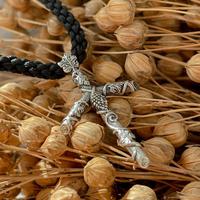Georgia, a land woven with history and culture, is home to some of the world’s most captivating ancient frescoes and murals. These artworks, predominantly found in historical religious sites, offer a visual journey through the country's rich past. They attract not only art enthusiasts but also travelers seeking to immerse themselves in the depth of Georgian heritage. This article, tailored for those interested in cultural tours and historical explorations, unravels the layers of stories told by these ancient artworks.
The Origins and Evolution of Georgian Frescoes
Frescoes and murals in Georgia trace their origins to the early Christian period, marking an essential phase in the region's artistic expression. The early works, primarily found in churches and monastic settings, showcase religious narratives and serve as didactic tools. These early frescoes set the foundation for a rich tradition of mural art that evolved through centuries.
A notable early example is the Bolnisi Sioni Cathedral, dating back to the 5th century. This cathedral houses some of the earliest frescoes, marking the commencement of Christian influence in Georgian art. Although simplistic compared to later works, these frescoes are pivotal in understanding the genesis of Georgian ecclesiastical art.
The Golden Age: Flourishing of Fresco Art
The golden age of Georgian fresco art unfolded during the medieval period, from the 11th to the 13th centuries. This era witnessed an unprecedented flourish in arts, catalyzed by the country's political stability and cultural interactions with neighboring regions. The frescoes from this period, found in places like the Gelati Monastery and the David Gareja Monastery Complex, are distinguished by their intricate details, vibrant colors, and sophisticated iconography.
In these artworks, one observes a blend of Georgian and Byzantine influences, illustrating the cultural exchanges of the era. The frescoes in Gelati Monastery, for instance, not only depict religious scenes but also offer glimpses into the societal and political life of medieval Georgia.
Techniques and Styles
The technique of fresco painting, involving the application of pigment onto wet plaster, requires skill and speed. Georgian artists mastered this technique, creating artworks that have withstood the test of time. The stylistic evolution from symbolic and simplistic to more realistic and elaborate forms mirrors the broader socio-political changes in Georgian history.
Preservation and Restoration
Preserving these ancient frescoes is a challenge, given their age and exposure to environmental factors. The Georgian government, along with international bodies like UNESCO, has undertaken various preservation and restoration projects. These efforts are crucial in keeping the frescoes accessible to the public and ensuring their survival for future generations.
Integration in Modern Tourism
For modern travelers, these frescoes offer a unique glimpse into Georgia's past. They are a focal point of cultural tourism, with guided tours providing historical context and insights. Visiting these sites, tourists contribute to the local economy and the preservation of these cultural treasures.
Specific Examples: The Jewels of Georgian Fresco Art
The Svetitskhoveli Cathedral's Timeless Narratives
One cannot discuss Georgian frescoes without highlighting the Svetitskhoveli Cathedral in Mtskheta. Dating back to the 11th century, this architectural marvel is home to some of the most significant frescoes in Georgian history. These frescoes not only depict religious themes but also serve as historical documents, portraying the royal figures of the era. The craftsmanship evident in these murals reflects the high artistic standards of the time and provides a vivid glimpse into the medieval period of Georgian history.
Vardzia Monastery: A Testament to Medieval Artistry
The Vardzia Monastery, carved into the side of the Erusheti Mountain, is another critical site. This 12th-century cave monastery complex is a testament to the ingenuity and creativity of Georgian artists. The frescoes here, particularly in the Church of the Dormition, are renowned for their depiction of the Virgin Mary, showcasing the evolution of iconography in Georgian religious art. These artworks are not only significant for their artistic value but also for their historical context, offering insights into the religious and cultural life of medieval Georgia.
The Cultural Crossroads at the David Gareja Monastery Complex
At the David Gareja Monastery Complex, the frescoes stand as a testament to Georgia’s position as a cultural crossroads. The complex's unique location on the Georgia-Azerbaijan border adds to the intrigue and allure of these artworks. The frescoes here blend various artistic influences, illustrating the cultural exchanges that occurred through trade and interaction with neighboring regions. This fusion of styles makes the David Gareja frescoes a unique study in the confluence of Eastern and Western art traditions.
The Role of Frescoes in Georgian Cultural Identity
These ancient artworks are not just tourist attractions; they are integral to the cultural identity of Georgia. They represent the artistic, religious, and historical narratives that have shaped the nation. In appreciating these frescoes, one also appreciates the resilience and creativity of the Georgian spirit.
Conclusion
The ancient frescoes and murals of Georgia offer a unique lens through which to view the country's rich history and cultural evolution. From the earliest Christian expressions in Bolnisi Sioni to the medieval masterpieces in Gelati and Vardzia, these artworks continue to captivate and inspire. As pillars of Georgian heritage, they remain an essential part of the nation's cultural narrative and a significant draw for cultural tourism. The journey through Georgia's fresco-laden past is not just a visual delight but a profound educational experience, unveiling the layers of history and art that define this proud nation.




 Cross of St. Nino
Cross of St. Nino
 Khakhuli Triptych
Khakhuli Triptych
 Iconography Workshops in Georgia
Iconography Workshops in Georgia




